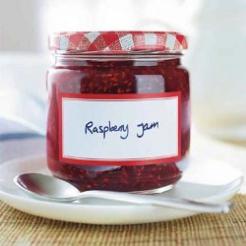Child trafficking, people making jam, transparency at grass-roots level and a Beavers parade... it's all going off in Ian Allsop's opinion piece this month in a tale of community fundraising and financial best practice.
Considering what to write, I noticed this month’s Charity Finance magazine carries a checklist of danger signs to look out for in the finance department. While always full of good advice, I am slightly doubtful whether these checklists actually work. Are they ever seen by their intended targets? Is the incompetent or blissfully unaware FD switched on enough to keep up with their reading? And isn’t it merely providing an aide memoire to any potentially crooked FD as to where they need to cover their tracks?
It got me thinking about compiling an alternative checklist. Ten issues for the modern clued-up charity finance director to be on top of. However, once I had come up with four I couldn’t think of any more (five if you count “never take financial advice from someone who can’t count to ten”).
Therefore, on Sunday morning I set off for church, seeking inspiration. That’s not strictly true. I went because it was my son’s monthly Beavers’ parade so I was accompanying him. But I took a notebook and hoped that while sitting there I might identify some new ideas for my column. Assuming I wasn’t expected to keep standing up and singing and things.
Surprising appeal
Straight away, the vicar showed an admirably direct approach to fundraising by launching the collection. No nonsense stuff. And then it was announced that there was going to be a presentation on behalf of a charity. Hello. The organisation was called Stop the Traffic and I was expecting a road safety presentation – sort of a Tufty Club for the next generation. But it was a hard-hitting set of powerpoint slides about the trafficking of child slave labour. While obviously shocked at the facts presented my initial concern was “Oh no, this is going to provoke some really awkward questions”.
My six year old son, whose imagination could almost have been designed as a way of illustrating the word “vivid”, was still coming to terms with the potential threat posed by giant rats after studying the Great Plague the previous week at school. Now I could envisage a whole new set of possible worries. “Daddy, what is prostitution and cannabis?” “Ask your Mother.” “Daddy, will the baddies try and take me?” “Only if you are naughty.”
It was powerful campaigning to be sure and had an important focus on positive action people could take, even at a tender age, through highlighting the use of child labour in the chocolate industry. This was very well done – the kids were involved in a play (in which the main character was called Chugger) about slave labour and cocoa beans and the fair-trade message was hammered home nicely. I could see great benefit to this when my son badgers me for chocolate. “No you can’t son because this chocolate was made with the blood, sweat and tears of innocent children no older than yourself. Have a banana instead.”
It was all proving very interesting but as yet I had expressed no further inspiration for my column. I flicked through the church’s newsletter and noted they were looking for a new treasurer (“no accounting qualification required”) and were advertising the upcoming Macmillan coffee morning. I mused upon how a lot of charitable endeavour has strong religious roots, yet religion has arguably played a role in exacerbating some of the problems it is trying to solve. I also pondered what God was up to when all of these kids were being trafficked. But such Dawkins-lite theological mind-grappling is hardly a topic for a whimsical end-piece.
But then suddenly, the room was filled with a tremendous light...was this the moment? No, it was just the sun appearing from behind a cloud and shining through the window.
Community spirit
As I looked round the room I realised that including myself there were four parent governors of my son’s school present, all parents of Beavers. Often within communities it is the same people who are involved with everything – who “run” the local school, and send their children to youth groups, who volunteer to check whether the vicar is swiping the collection money, and who make jam to be sold at the coffee morning. The UK has a vibrant tradition of voluntary activity embracing positive energy but the constituent base is not always very, well, big. The challenge for Big Society is how to involve more and different people.
To conclude the service, the vicar thanked everyone for their contribution to the collection (classic fundraising best practice etiquette observed). She said there were some pie charts on display in the foyer which showed where the money was spent and what core expenditure the church had to cover, which I thought was admirably up-front about administration costs. But I was no further forward in my quest for the salvation of my column – so it’s back to the checklist. 1) FDs: Never start a task that you will struggle to fini...









